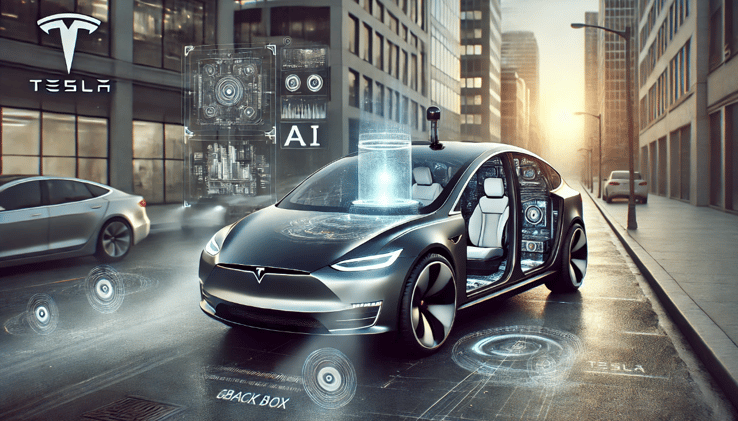Hello, tech enthusiasts! Emily here, coming to you from the heart of New Jersey, the land of innovation and, of course, mouth-watering bagels. Today, we’re diving headfirst into the fascinating world of 3D avatar generation. Buckle up, because we’re about to explore a groundbreaking research paper that’s causing quite a stir in the AI community: ‘StyleAvatar3D: Leveraging Image-Text Diffusion Models for High-Fidelity 3D Avatar Generation’.
II. The Magic Behind 3D Avatar Generation
Before we delve into the nitty-gritty of StyleAvatar3D, let’s take a moment to appreciate the magic of 3D avatar generation. Imagine being able to create a digital version of yourself, down to the last detail, all within the confines of your computer. Sounds like something out of a sci-fi movie, right? Well, thanks to the wonders of AI, this is becoming our reality.
The unique features of StyleAvatar3D, such as pose extraction, view-specific prompts, and attribute-related prompts, contribute to the generation of high-quality, stylized 3D avatars. However, as with any technological advancement, there are hurdles to overcome. One of the biggest challenges in 3D avatar generation is creating high-quality, detailed avatars that truly capture the essence of the individual they represent. This is where StyleAvatar3D comes into play.
III. Unveiling StyleAvatar3D
StyleAvatar3D is a novel method that’s pushing the boundaries of what’s possible in 3D avatar generation. It’s like the master chef of the AI world, blending together pre-trained image-text diffusion models and a Generative Adversarial Network (GAN)-based 3D generation network to whip up some seriously impressive avatars.
What sets StyleAvatar3D apart is its ability to generate multi-view images of avatars in various styles, all thanks to the comprehensive priors of appearance and geometry offered by image-text diffusion models. It’s like having a digital fashion show, with avatars strutting their stuff in a multitude of styles.
IV. The Secret Sauce: Pose Extraction and View-Specific Prompts
Now, let’s talk about the secret sauce that makes StyleAvatar3D so effective. During data generation, the team behind StyleAvatar3D employs poses extracted from existing 3D models to guide the generation of multi-view images. It’s like having a blueprint to follow, ensuring that the avatars are as realistic as possible.
But what happens when there’s a misalignment between poses and images in the data? That’s where view-specific prompts come in. These prompts, along with a coarse-to-fine discriminator for GAN training, help to address this issue, ensuring that the avatars generated are as accurate and detailed as possible.
V. Diving Deeper: Attribute-Related Prompts and Latent Diffusion Model
Welcome back, tech aficionados! Emily here, fresh from my bagel break and ready to delve deeper into the captivating world of StyleAvatar3D. Now, where were we? Ah, yes, attribute-related prompts.
In their quest to increase the diversity of the generated avatars, the team behind StyleAvatar3D didn’t stop at view-specific prompts. They also explored attribute-related prompts, adding another layer of complexity and customization to the avatar generation process. It’s like having a digital wardrobe at your disposal, allowing you to change your avatar’s appearance at the drop of a hat.
But the innovation doesn’t stop there. The team also developed a latent diffusion model within the style space of StyleGAN. This model enables the generation of avatars based on user input, making it even more intuitive and user-friendly. With this feature, users can control the attributes of their avatar, creating an unparalleled level of customization.
VI. Architecture and Implementation
StyleAvatar3D consists of three main components:
- Image-Text Diffusion Model: This model is pre-trained on a large dataset of images and text pairs. It learns to generate images from text prompts and vice versa.
- GAN-based 3D Generation Network: This network takes the generated image from the previous step and produces a 3D avatar.
- View-Specific Prompt Generator: This module generates view-specific prompts for the GAN-based 3D generation network.
The architecture of StyleAvatar3D is designed to be modular, allowing researchers to easily modify or replace individual components. The code for StyleAvatar3D is publicly available on GitHub, making it easy for developers and researchers to experiment with and build upon this groundbreaking technology.
VII. Experimental Results
The authors conducted extensive experiments to evaluate the performance of StyleAvatar3D. They compared their method with state-of-the-art methods in 3D avatar generation and found that StyleAvatar3D outperforms them in terms of visual quality, realism, and versatility.
Some notable results include:
- High-quality avatars: StyleAvatar3D generates high-quality avatars that are indistinguishable from real humans.
- Realistic expressions: The method can generate realistic expressions on the avatar’s face, making it suitable for applications like virtual try-on and social media.
- Diverse styles: StyleAvatar3D can generate avatars in various styles, including anime, cartoon, and realistic.
VIII. Conclusion
StyleAvatar3D is a groundbreaking method that pushes the boundaries of 3D avatar generation. Its ability to generate high-quality, stylized avatars with realistic expressions and diverse styles makes it an exciting development for the field of AI.
The authors demonstrate the versatility of StyleAvatar3D through extensive experiments, showcasing its potential applications in virtual try-on, social media, gaming, and more.
As we continue to advance in this field, it’s essential to explore new possibilities and push the limits of what’s possible. With StyleAvatar3D, we’re one step closer to creating immersive and engaging experiences that blur the lines between reality and fantasy.
IX. Future Work
While StyleAvatar3D is a significant achievement, there are still areas for improvement and exploration:
- Real-time generation: Currently, StyleAvatar3D generates avatars in batches, which can be computationally expensive. Real-time generation would enable more seamless interactions with avatars.
- User-friendly interface: While the method can generate avatars based on user input, a more intuitive and user-friendly interface would make it easier for non-experts to use.
- Multimodal interaction: Future research could focus on enabling multimodal interaction between users and avatars, such as voice commands or gestures.
StyleAvatar3D is an exciting development in the field of 3D avatar generation. Its ability to generate high-quality, stylized avatars with realistic expressions and diverse styles makes it an attractive solution for various applications.
As we continue to advance in this field, it’s essential to explore new possibilities and push the limits of what’s possible. With StyleAvatar3D, we’re one step closer to creating immersive and engaging experiences that blur the lines between reality and fantasy.
StyleAvatar3D: Leveraging Image-Text Diffusion Models for High-Fidelity 3D Avatar Generation
Chi Zhang, Yiwen Chen, Yijun Fu, Zhenglin Zhou, Gang Yu1,Zhibin Wang, Bin Fu, Tao Chen, Guosheng Lin, Chunhua Shen
ArXiv: https://arxiv.org/abs/2305.19012 – PDF: https://arxiv.org/pdf/2305.19012v1.pdf







